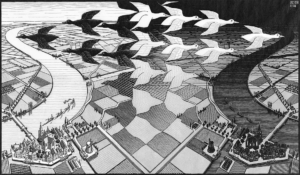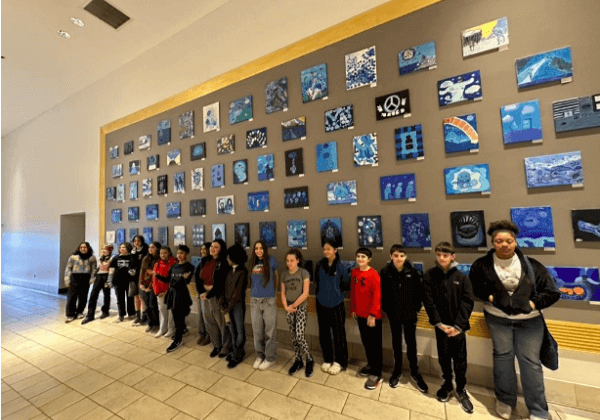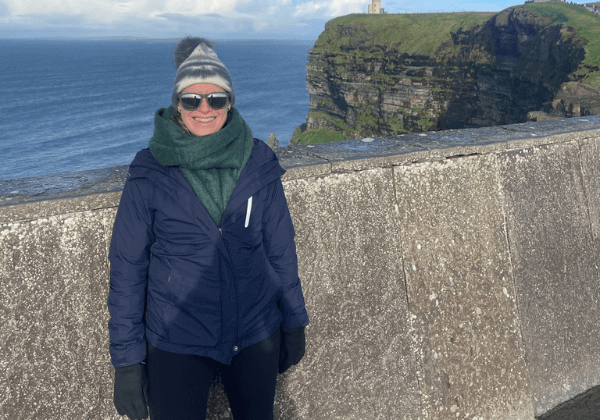Infinite Space Drawing

Here’s a fun project that will allow you to explore new ways of understanding both the illusion of space, inexorably grappled with by artists throughout history, and the inherent flatness of your paper’s surface. These two ideas collide (or reach a peaceful harmony) below. And attempting to draw the impossible (something not visible) will allow you to think and make in new ways, without the need for direct representation.
Project:
On a large piece of paper, make a CIRCULAR drawing of INFINITE SPACE. To begin, draw a FREEHAND circle on your paper as large as you can make it. Cut the circle out.
Your piece can be representational, abstract, fantastical, surreal, or??
Consider:
HOW you draw – form and content. This should not be an illustration, but a hands on, process-based drawing
Look at:
Mark Grotjahn / Eve Aschheim / Vija Celmins / Daniel Zeller / Terry Winters / MC Escher / Optical art / https://en.wikipedia.org/wiki/Infinity
————————-
IDEAS:
Does infinity exist in our physical universe: Are there an infinite number of stars? Does the universe have infinite volume? Does space “go on forever”? This is an open question of cosmology. Note that the question of being infinite is logically separate from the question of having boundaries. The two-dimensional surface of the Earth, for example, is finite, yet has no edge. By travelling in a straight line one will eventually return to the exact spot one started from. The universe, at least in principle, might have a similar topology. If so, one might eventually return to one’s starting point after travelling in a straight line through the universe for long enough.
If, on the other hand, the universe was not curved like a sphere but had a flat topology, it could be both unbounded and infinite. The curvature of the universe can be measured through multiple moments in the spectrum of the cosmic background radiation. As to date, analysis of the radiation patterns recorded by the WMAP spacecraft hints that the universe has a flat topology. This would be consistent with an infinite physical universe.
However, the universe could also be finite, even if its curvature is flat. An easy way to understand this is to consider two-dimensional examples, such as video games where items that leave one edge of the screen reappear on the other. The topology of such games is toroidal and the geometry is flat. Many possible bounded, flat possibilities also exist for three-dimensional space.
The concept of infinity also extends to the multiverse hypothesis, which, when explained by astrophysicists such as Michio Kaku, posits that there are an infinite number and variety of universes.
Art Works:

Daniel Zeller, “Subduction,” 2017, Ink and acrylic on paper, 30 x 37 inches (Courtesy Pierogi Gallery)

Eve Aschheim, Lurker, gesso, ink, graphite on mylar (Courtesy the Artist)

Vija Celmins, Shell, 2009 to 2010, 18 X 13 inches. (Courtesy Matthew Marks gallery)

Mark Grotjahn, Untitled (Butterfly with Eyes CB and SL 768), 2008, colored pencil and oil on paper
47 3/4 x 37 inches (Courtesy The Broad, Los Angeles, CA)

Terry Winters, Parallel Rendering 2, 1996, oil, alkyd resin on linen, 96 X 120 inches (Courtesy Matthew Marks Gallery)

MC Escher

Wen-Ying Tsai, “Super-imposed Painting: Random Field” (1963), Day-Glo pigments, hardboard, wood, canvas. 60 x 78 x 3.5 inches



